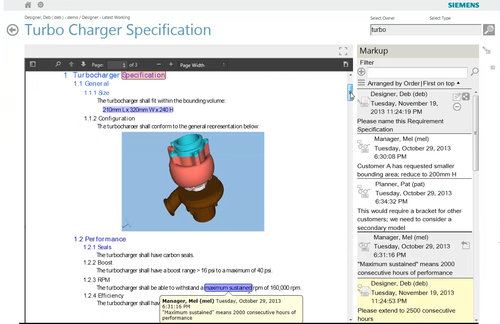Design collaboration now includes the entire value chain. From suppliers to customers, purchasing to outside experts, the collaborative design team includes internal and external groups. The design process now stretches across the globe in multiple software formats.
May 27, 2016
The days of designing a product alone on your computer are gone. Outside experts, suppliers, customers, and internal groups such as purchasing and manufacturing are involved in the design from product conception through the prototype and prep for production. Design tools have become collaboration friendly. The design software tools integrate with other software tools -- even tools from competing providers -- so each group can see the design in its own preferred platform.
From beginning design through the manufacturing process, multiple teams are collaborating. “Say the product is a new lawnmower. Requirements from marketing say we need a 10-horsepower product with a 24-inch blade,” said Craig Therrien, product manager at Dassault Systèmes’ SolidWorks. “Then purchasing gets involved early to get a cost target. The manufacturing people also get in earlier to help reach a reasonable price point.”

With Siemens PLM Teamcenter you can easily review, collaborate, mark-up, and add comments to requirements as they evolve.
(Source: Siemens PLM)
As well as multiple teams within a company collaborating, there are also outside experts, customers, and suppliers who may be half a world away. Even within the same company, the design team may be dispersed. “Our customers no longer work at a facility that contains all of the design. They don’t do it under one roof. It’s a dispersed workforce globally. It’s inter-department, state-to-state, and continent-to-continent,” said Mark Fischer, director of partner strategy for CAD at PTC. “It’s not just models they collaborate on. It could be the whole process: analysis results, manuals, specifications. Everything that makes up a product is what they’re collaborating on.”
With a wide variety of partners involved in the design, that also means a variety of design software platforms. Integration, even among competing software platforms, is critical. “Collaboration often involves multiple CAD sources. We have collaboration tools that allow for a Creo user to open any native CAD model inside of Creo,” said Fischer. “I might get a SolidWorks file, and I don' have to lose any data if I open it inside of Creo. I can convert it into a Creo file, provide my analysis, make some changes to it, and return it in SolidWorks without losing any data.”
.jpg?width=700&auto=webp&quality=80&disable=upscale)
SolidWorks users can collaborate on mobile devices
(Source: SolidWorks)
Through the design process, teams manage numerous iterations of the product as specific aspects of the design are explored. The individual iterations need to be managed so nothing is lost along the way. “We can take a design, make some changes, remove some objects, and add some objects. Then we can go back to the original and try another concept and create sub-concepts,” said Fischer. “We have to orchestrate this tree of different concepts as a thread of iterations and check them in as an archive so we can visualize it together.”
Another thread in the process that needs to be managed is the series of conversations that lead to design decisions. The goal is to capture a conversation thread and attach it to the design. “Collaboration can be difficult because not everyone is in the same building. No matter where they are, they can have an asynchronous conversation about a change order or anything in the design,” said Steve Chalgren, EVP of product management at Arena Solutions. “The problem is that you can have many people involved. If one person is left out, they don’t have the information. But if the thread is right there with the product, they can review it a year later and see the whole conversation.”
About the Author(s)
You May Also Like





